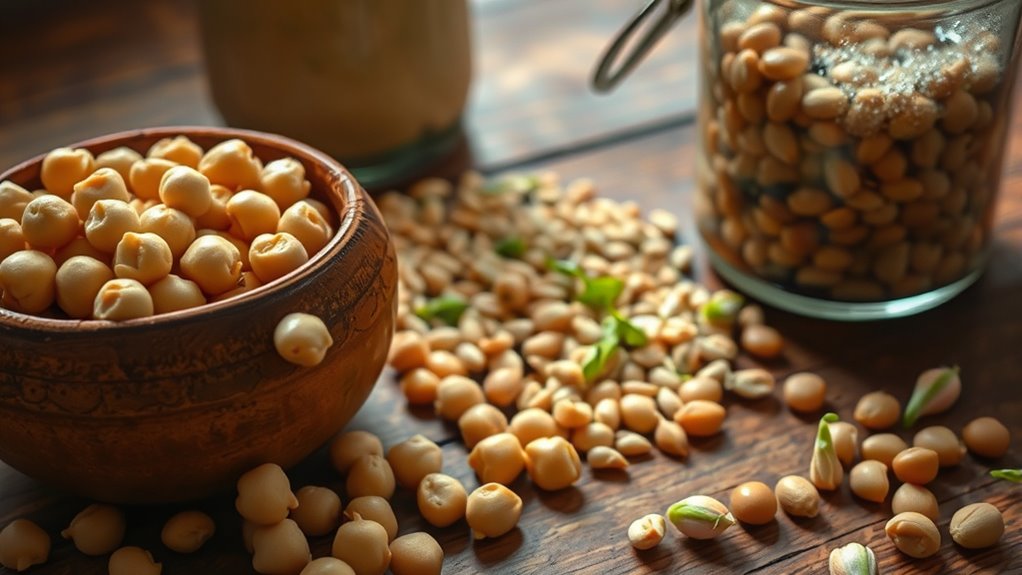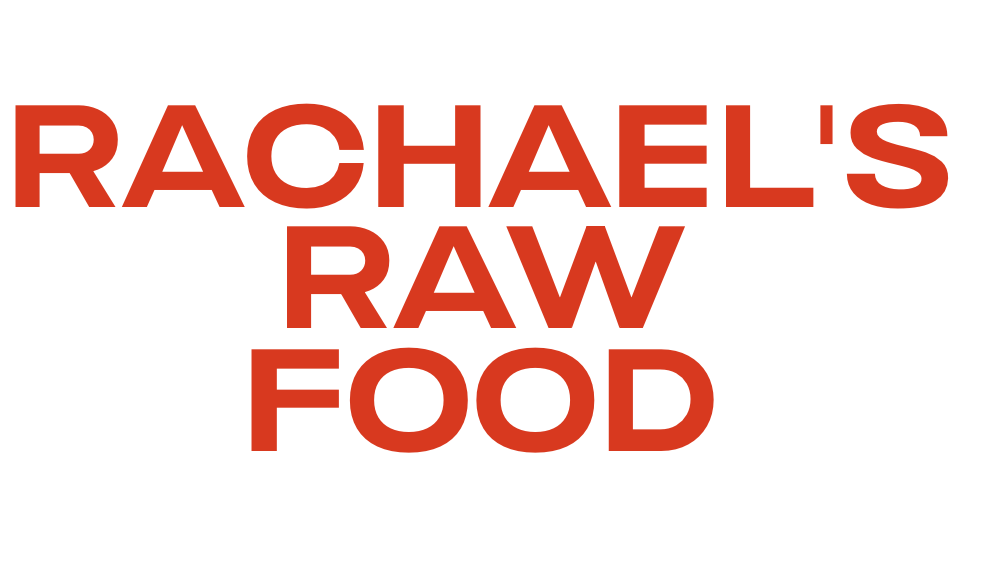To reduce anti-nutrients like phytic acid and enzyme inhibitors in plant-based foods, you can soak, sprout, or ferment them. Soaking in water activates enzymes that break down these compounds, making minerals more available and easing digestion. Sprouting further decreases anti-nutrients while increasing vitamins and nutrient absorption. Fermentation uses beneficial microbes to transform and reduce anti-nutrients, improving gut health and nutrient bioavailability. Keep exploring these simple methods to maximize your food’s nutritional benefits.
Key Takeaways
- Soaking, sprouting, and fermenting activate enzymes that break down anti-nutrients like phytic acid and enzyme inhibitors.
- These methods increase mineral bioavailability and improve digestion of plant-based foods.
- Soaking reduces anti-nutrient levels, making minerals such as iron, zinc, and calcium more absorbable.
- Sprouting enhances nutrient content, including B vitamins and vitamin C, while decreasing anti-nutrient levels.
- Fermentation produces beneficial probiotics and significantly lowers anti-nutrients, supporting gut health and nutrient absorption.

Have you ever wondered why some healthy foods can cause digestive issues or nutrient deficiencies? It’s often because of anti-nutrients like phytic acid and enzyme inhibitors lurking within plant-based foods. These compounds evolved to protect plants from pests and spoilage, but they can interfere with your body’s ability to absorb vital minerals and nutrients. Phytic acid, for example, binds minerals like iron, zinc, and calcium, forming insoluble complexes that your digestive system struggles to absorb. Similarly, enzyme inhibitors can block enzymes needed for digestion, making it harder for your body to break down proteins and carbohydrates efficiently. This can lead to bloating, gas, and even nutrient deficiencies if consumed in large amounts over time.
Anti-nutrients like phytic acid and enzyme inhibitors can hinder mineral absorption and digestion.
Fortunately, you can reduce the impact of these anti-nutrients through simple, natural methods like soaking, sprouting, and fermenting. Soaking grains, nuts, seeds, and legumes in water for several hours or overnight can considerably decrease phytic acid levels. During soaking, enzymes activate that break down phytic acid and enzyme inhibitors, making minerals more bioavailable and easing digestion. For example, soaking chickpeas or almonds overnight can transform their nutritional profile, making them easier on your gut and more nourishing.
Sprouting is another effective technique. When you soak and then allow these foods to sprout, you trigger germination processes that naturally diminish anti-nutrients. As the seed begins to grow, it produces enzymes that break down phytic acid and other inhibitors, boosting nutrient content and digestibility. Sprouted grains and legumes not only offer better mineral absorption but also tend to be easier to digest overall. Plus, sprouting enhances vitamin levels, especially B vitamins and vitamin C, making your foods even more nutritious.
Fermentation takes things a step further by harnessing beneficial microbes to transform anti-nutrients. When you ferment foods like sauerkraut, kimchi, or sourdough bread, the bacteria produce enzymes that degrade phytic acid and enzyme inhibitors. This process not only reduces anti-nutrient content but also creates probiotics that support your gut health. The fermentation process can dramatically improve mineral absorption, reduce bloating, and boost your overall digestion. It’s a natural, traditional method that’s been used for centuries to make foods more digestible and nutrient-rich.
Incorporating soaking, sprouting, and fermenting into your food preparation routine can help you enjoy the health benefits of plant-based foods without the common side effects of anti-nutrients. These methods are simple, affordable, and effective ways to optimize your nutrient intake, improve digestion, and support your overall well-being. By reducing phytic acid and enzyme inhibitors, you’re not just making your food easier to digest—you’re revealing more of its nutritional potential.
Frequently Asked Questions
How Long Should I Soak Grains to Reduce Anti-Nutrients Effectively?
You should soak grains for about 12 to 24 hours to effectively reduce anti-nutrients. During grain preparation, changing the soaking water a couple of times helps remove inhibitors like phytic acid. Keep in mind that anti-nutrient timing varies; longer soaking generally results in better reduction. Make sure to rinse thoroughly afterward, and consider sprouting or fermenting for even more anti-nutrient breakdown, enhancing nutrient absorption and digestion.
Can Sprouting Completely Eliminate All Anti-Nutrients From Legumes?
Sprouting considerably reduces anti-nutrients in legumes but doesn’t completely eliminate them. It’s a great way to achieve a more complete detox while preserving nutrients like vitamins and minerals. However, some anti-nutrients, such as phytates and lectins, may still remain at lower levels. To maximize benefits, combine sprouting with other methods like soaking or fermenting. Always remember, no single process guarantees total removal, but it’s an effective step toward healthier legumes.
Does Fermenting Improve Nutrient Absorption Besides Reducing Anti-Nutrients?
Yes, fermenting improves nutrient bioavailability by breaking down complex compounds, making minerals and vitamins easier for your body to absorb. Microbial activity during fermentation transforms anti-nutrients and enhances the digestibility of foods. This process not only reduces anti-nutrients but also boosts nutrient quality, ensuring you get more out of your meals. So, fermenting is a great way to increase the nutritional value and overall health benefits of your food.
Are There Any Anti-Nutrients Resistant to Soaking, Sprouting, or Fermenting?
Resistant anti-nutrients, like phytic acid, can sometimes withstand soaking, sprouting, or fermenting. These methods reduce many anti-nutrients, but some may persist, making alternative detox methods necessary. You might consider enzymatic supplements or specific cooking techniques to further minimize their effects. Stay informed about resistant anti-nutrients to optimize nutrient absorption, especially if you’re sensitive or aiming for maximum health benefits.
How Do Storage Conditions Affect the Reduction of Anti-Nutrients During These Processes?
Storage conditions greatly impact the reduction of anti-nutrients during soaking, sprouting, and fermenting. Poor storage can cause nutrient degradation and reduce nutrient stability, making anti-nutrient reduction less effective. Keep your grains and legumes in cool, dry, airtight containers to preserve their quality. Proper storage minimizes spoilage, maintains enzyme activity, and ensures that the anti-nutrient reduction processes work efficiently, resulting in healthier, more nutritious foods.
Conclusion
By soaking, sprouting, and fermenting your foods, you can considerably cut down anti-nutrients that hinder nutrient absorption. Did you know that these methods can reduce phytates by up to 50%, making minerals like iron and zinc more available? Incorporating these simple techniques not only boosts your health but also makes your meals more nutritious and digestible. Start using these methods today, and give your body the benefits it truly deserves.










